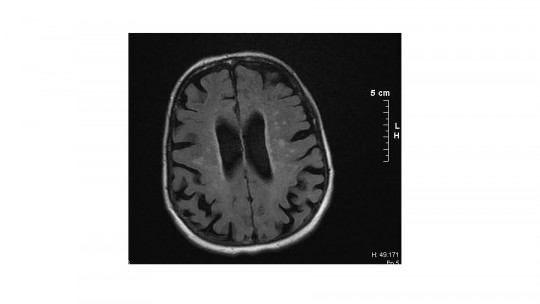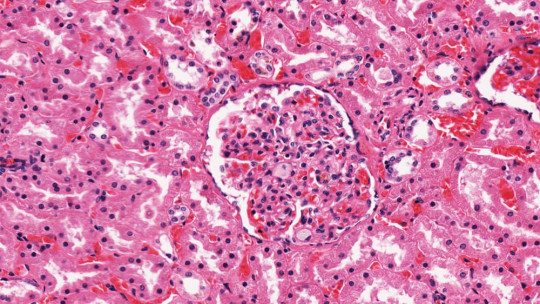Dementias involve the loss of brain function, and are due to multiple causes and diseases. They affect memory, thinking, language, judgment and behavior, and appear especially after the age of 60.
In this article we will talk about Binswanger’s disease, a neurological disorder that causes vascular dementia This type of dementia involves symptoms such as manic episodes and loss of inhibition, and constitutes 1-5% of all dementias.
Binswanger’s disease: characteristics
Binswanger’s disease is a disease that causes vascular type dementia, and which It is characterized by atrophy of the cerebral white matter It arises as a consequence of a vascular deficiency due to the existence of severe arteriosclerosis of the vessels that supply the deep white mass. Later we will see what arteriosclerosis is.
This type of dementia involves the presence of two types of infarcts: lacunar and cortical. At the prevalence level, dementia due to Binswanger’s disease accounts for between 1 and 5% of all dementias.
Risk factor’s
The main risk factor for Binswanger’s disease is high blood pressure (94% of patients with the disease are hypertensive), linked to age and the degree of severity of cerebral arteriosclerosis.
Furthermore, dementia is often also associated with the presence of type 2 diabetes, thrombocytosis, hyperlipidemia and coronary heart disease
Symptoms
Patients with dementia due to Binswanger’s disease, in most cases, They present their first symptoms between 60 and 70 years of age There are no differences between women and men in terms of symptoms or probabilities of developing this disease.
On the other hand, on average, the life expectancy of patients is 5 years longer from the moment of diagnosis.
The first three symptoms of Binswanger’s disease, which appear in the initial phases and in 70% of cases, are the following.
1. Manic episodes
Manic episodes are defined and persistent periods during which an abnormally elevated, expansive, or irritable mood They are easy episodes to detect because the person feels especially energetic, impulsive and euphoric, with ideas of grandeur. This is a psychological state similar to hypomania.
2. Judgment alterations
The capacity for judgment is the cognition with which thought works ; Judging involves establishing relationships between two or more concepts. In everyday life, we use judgment or logic to understand things and analyze reality with common sense.
Patients with Binswanger’s disease dementia have altered judgment or logic, presenting difficulties in this type of reasoning or thinking.
3. Loss of inhibition
Inhibition or inhibitory control is the human ability to inhibit or control impulsive responses (or automatic), and generate responses mediated by attention and reasoning. It is a cognitive skill that contributes to anticipating, planning and setting goals.
In Binswanger’s disease this ability is altered, and the patient loses the ability to plan and organize their behavior. Likewise, he begins to develop behavioral patterns characterized by impulsivity.
4. Other symptoms
Later, and as the disease progresses, abulia (lack of will or energy to do something or move) appears in the patient, as well as orientation problems. The person begins to depend on others when carrying out activities of daily living (AVC).
On the other hand, sometimes it may appear a short- or long-term memory loss , a characteristic that typically appears in various types of dementia. Mental symptoms associated with other symptoms of neurological origin may also appear, such as lack of motor coordination (when walking) or the presence of seizures.
Causes
Binswanger’s disease dementia is caused by vascular deficiency. This is due to the existence of severe arteriosclerosis of the vessels that supply the deep white matter.
Atherosclerosis, for its part, is a condition where plaque builds up inside the arteries , plaque being a sticky substance made up of fat, cholesterol, calcium and other substances found in the blood. Over time, this plaque hardens and narrows the arteries, limiting the flow of oxygen-rich blood.
Treatment
Once Binswanger’s disease dementia has been diagnosed, treatment is essentially symptomatic On the other hand, high blood pressure is treated until it reaches normal levels (below 140/90 mm/Hg), which allows the symptoms to be stabilized.
Some authors suggest reducing hematocrit when it is above 45%; Hematocrit is directly related to fibrinogen levels and blood viscosity.
It is important to note that the treatment of Binswanger’s disease should focus primarily on a preventive treatment and control of high blood pressure , since this is the main risk factor associated with the disease. In this way, preventing and controlling hypertension will help avoid cerebral arteriosclerosis that causes dementia.









